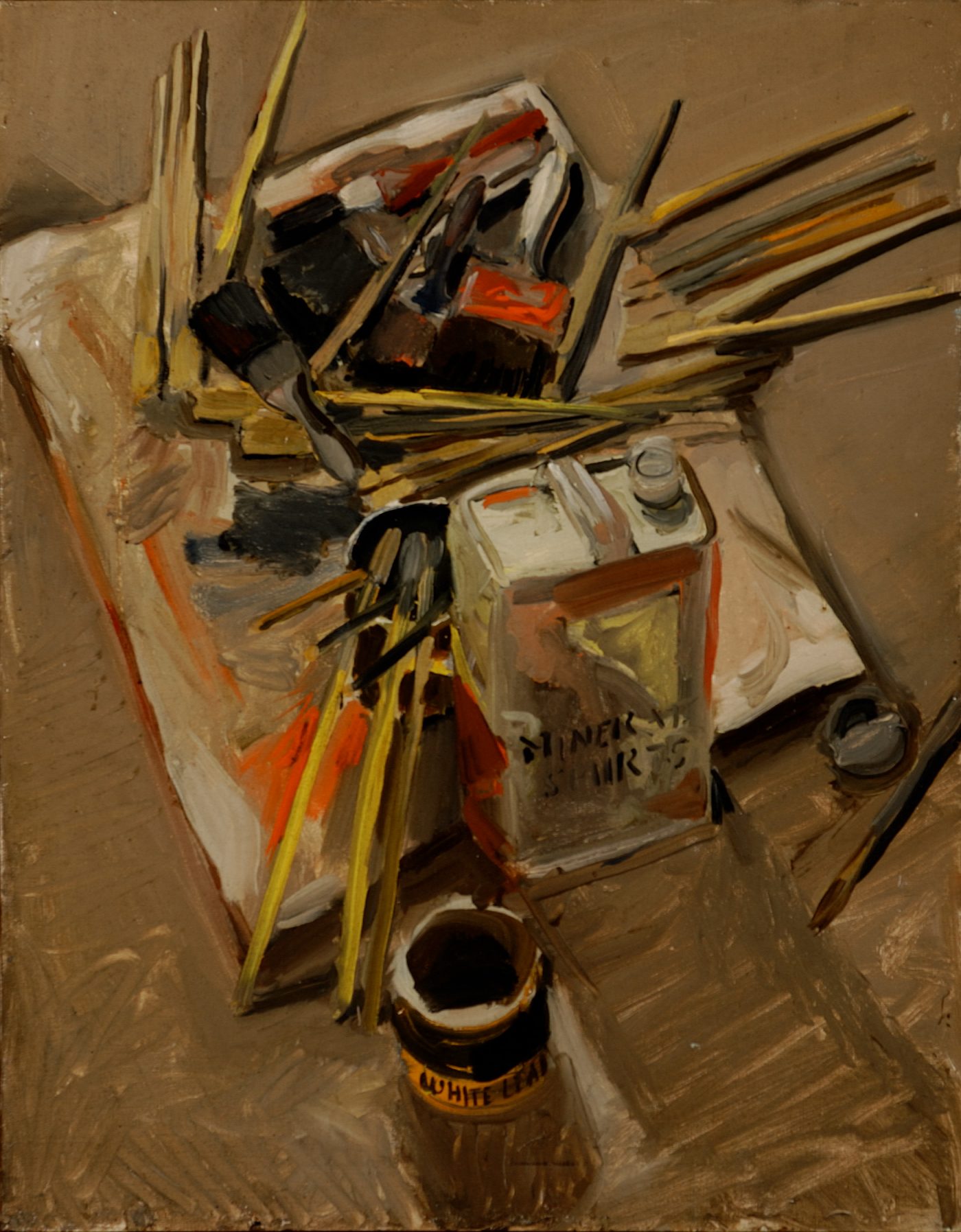In 1949, Fairfield Porter (1907–1975) established his home and studio on the East End of Long Island when he moved with his wife and children from New York City into a rambling, nineteenth-century sea captain’s house and adjoining stable on two acres in the Village of Southampton. The paintings in this gallery, on canvas, Masonite, and one on an aluminum sheet, are a selection from the 250 works, many unfinished, from the 1980 gift by the artist’s estate to the Parrish, affording rare insight into the working practice of a modern American master. Fairfield Porter: Raw both reveals and celebrates Porter’s artistic legacy and its continuing influence throughout the world.
Porter cited the French post-Impressionist painter Édouard Vuillard (1868–1940) and the American Abstract Expressionist Willem de Kooning (1904–1997) as his most important influences. From Vuillard he learned to paint in a manner that was “concrete in detail and abstract as a whole;” from de Kooning, a working process that was open-ended and uncontrolled. “I was beginning to be interested in what you can do with paint, what is the quality of paint, what is its nature.” In Painting Materials (to the left), the artist looked no farther than his studio table to find a worthy subject—one that conveyed the casual disarray that is a distinctive feature of his artistic practice and emphasizes his deep interest in materials.
Porter often worked in the spontaneous, less finished style of an oil sketch, frequently choosing to ignore detail. Porter’s close friend, the painter Jane Freilicher, once remarked: “An ‘unfinished’ quality . . .was part of his paintings. The same sort of casualness you find in the household, you find in his paintings.” Many of the works on view in this gallery suggest that “unfinished” quality. In a late portrait of Porter’s daughter Katie sitting outdoors, her features lack definition and the background is indistinct. A viewer might assume that the painting is unfinished. Yet the fact that the painting is signed and dated confirms that the lack of “finish” is, for Porter, not the most important thing in a painting.








